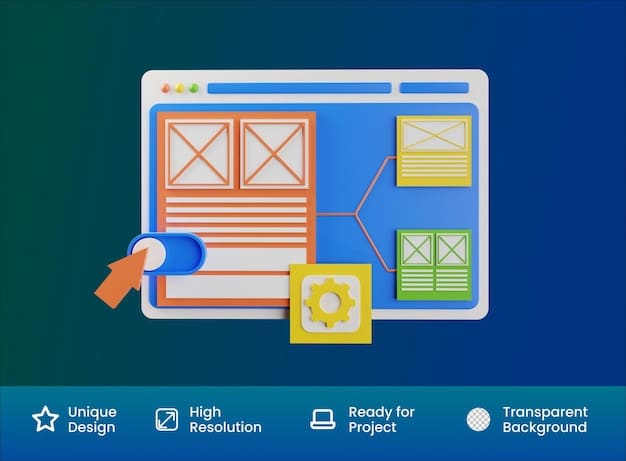Key Financial Aid Deadlines for US Students 2025-2026

Don’t Miss Out: Key Financial Aid Deadlines for US Students in the 2025-2026 Academic Year by staying informed on critical dates like the FAFSA, CSS Profile, and institutional aid deadlines to maximize your chances of receiving financial assistance for college.
Navigating the world of financial aid can be overwhelming, but understanding and meeting deadlines is crucial for securing funding for your education. Don’t Miss Out: Key Financial Aid Deadlines for US Students in the 2025-2026 Academic Year – We will break down the essential dates you need to know to maximize your chances of receiving assistance.
Understanding the Importance of Financial Aid Deadlines
The pursuit of higher education is a significant investment, and financial aid can play a vital role in making college accessible. However, the availability of these funds is often contingent on meeting specific deadlines. Missing these dates can drastically reduce your chances of receiving aid, potentially impacting your ability to afford college.
Financial aid is not an endless resource. Colleges and government agencies allocate funds on a first-come, first-served basis. Therefore, early application is not just recommended, it’s often essential.
Why are Deadlines so Strict?
Financial aid deadlines are strictly enforced for several reasons. They allow institutions to:
- Allocate funds efficiently: Deadlines provide a structured timeline for processing applications and distributing aid.
- Ensure fairness: A consistent deadline ensures all students have an equal opportunity to apply for and receive aid.
- Manage resources: Colleges need to plan their budgets and allocate resources according to the number of eligible applicants.

Missing a deadline doesn’t necessarily mean you won’t receive any aid, but it can significantly limit your options. You might lose eligibility for certain grants or scholarships, leaving you with only loan options.
Staying organized and creating a calendar with all relevant deadlines is critical. Proactive management can make all the difference in securing the financial support you need to pursue your educational goals.
The Free Application for Federal Student Aid (FAFSA)
The FAFSA is the cornerstone of the financial aid application process. It’s the primary application for federal student aid, including grants, loans, and work-study programs. Completing the FAFSA is a mandatory step for almost all students seeking financial assistance.
For the 2025-2026 academic year, the FAFSA will be based on your family’s income and assets from the 2023 tax year. With the “Better FAFSA” implementation, there have been changes to the application process and the Expected Family Contribution (EFC) calculation, now known as the Student Aid Index (SAI).
Key FAFSA Dates for 2025-2026
While the official FAFSA release date has been subject to changes in recent years, aim to complete the FAFSA as close to the opening date as possible. Here are key dates to keep in mind:
- October 1, 2024: Soft Launch of the 2025-2026 FAFSA
- Varies by State: Many states have their own FAFSA deadlines, which can be earlier than the federal deadline. Check your state’s higher education agency website for specific dates.
- Check Individual Colleges: Many colleges also have their own FAFSA deadlines, which might be earlier than the state or federal deadlines.
Meeting these deadlines is crucial for being considered for the widest range of financial aid opportunities. Remember, these dates can vary, so check official sources for the most accurate information.
Tips for Completing the FAFSA
Completing the FAFSA can seem daunting, but with proper preparation, it can be a smooth process:
- Gather necessary documents: Before you begin, collect your social security number, tax returns (and those of your parents, if you’re a dependent student), bank statements, and records of any investment.
- Create an FSA ID: Both the student and a parent (if the student is dependent) will need an FSA ID to electronically sign the FAFSA.
- Don’t wait until the last minute: The FAFSA website can experience heavy traffic closer to the deadlines, so complete the application well in advance.
Taking these steps will help ensure you complete the FAFSA accurately and on time, maximizing your chance of receiving financial aid.
The CSS Profile: Expanding Your Aid Options
While the FAFSA is used by virtually all colleges, some private institutions also require the CSS Profile. The CSS Profile provides a more detailed assessment of your family’s financial situation and is used to determine your eligibility for institutional aid, such as grants and scholarships offered directly by the college.
Unlike the FAFSA, the CSS Profile is not free. However, fee waivers are available for eligible students, based on income and other factors. Check the College Board website for more information on fee waivers.
Key CSS Profile Dates for 2025-2026
The CSS Profile also opens up in the fall, the deadlines can vary significantly, so it’s important to check each college’s specific requirements.
- October 1, 2024: The CSS Profile typically becomes available on October 1st.
- Varies by College: Each college sets its own CSS Profile deadline. These deadlines can range from November to February.

Always check the financial aid website of each college you’re applying to determine if the CSS Profile is required and to confirm their specific deadlines. Missing the CSS Profile deadline can mean missing out on substantial institutional aid opportunities.
Meeting these deadlines is critical for being considered for the widest range of financial aid opportunities. Remember, these dates can vary, so check official sources for the most accurate information.
Strategies for Completing the CSS Profile
Completing the CSS Profile requires careful attention to detail, here are some useful tips:
- Gather comprehensive financial documents: The CSS Profile requires more detailed information about your family’s assets and income, including information about investments, businesses, and real estate.
- Understand the questions: Some questions on the CSS Profile can be complex and require careful consideration. Take time to understand each question and provide accurate answers.
- Apply for a fee waiver: If you believe you’re eligible for a fee waiver, apply for it early. The College Board will determine your eligibility based on your family’s financial information.
Completing the CSS Profile accurately and on time can significantly increase your chances of receiving institutional aid from private colleges.
Understanding Institutional Aid Deadlines
In addition to federal and state aid, many colleges offer their own institutional aid, including grants and scholarships. These programs are funded by the college’s own resources and can be a significant source of financial assistance.
Institutional aid deadlines are set by individual colleges, but these deadlines are usually earlier than federal or state deadlines. Check the financial aid website of each college you’re applying to to determine their specific dates.
Where to Find College-Specific Deadlines
Finding college-specific financial aid deadlines is a matter of doing some homework. Here are some steps to take:
Start with the college’s financial aid website, it’s is the primary source of information about financial aid at that institution. Look for a section on “Applying for Aid” or “Deadlines.” If you can’t find the information online, contact the financial aid office directly. They can provide you the most up-to-date deadlines.
Attending college information sessions or financial aid workshops and webinars, these events often cover important deadlines and application procedures.
Colleges may also have different deadlines for different types of aid, such as merit-based scholarships or need-based grants. Make sure you understand the deadlines for all the aid programs you’re interested in.
Meeting these deadlines is critical for being considered for the widest range of financial aid opportunities. Remember, these dates can vary, so check official sources for the most accurate information.
State Aid Deadlines
Many states offer financial aid programs to residents attending colleges. These programs can include grants, scholarships, and loan forgiveness programs. The requirements and eligibility criteria vary by state, so it’s important to research the programs available in your state of residence.
State aid deadlines can also vary significantly. Some states have deadlines as early as December, while others have rolling deadlines that extend into the spring. Check your state’s higher education agency website for specific dates.
You can usually find this agencies information by searching “[your state] higher education agency” on the internet.
Missing these deadlines can limit your eligibility for state-funded aid programs. Staying informed about these deadlines is crucial for maximizing your financial aid opportunities.
Creating a Timeline and Staying Organized
With so many deadlines to keep track of, it’s essential to create a comprehensive timeline and stay organized throughout the financial aid application process. Start by creating a spreadsheet or calendar that includes all relevant deadlines. Include FAFSA, CSS Profile, institutional aid, and state aid deadlines.
Set reminders for each deadline, both on your calendar and on your phone or other devices. Start working on your applications well in advance of the deadlines. This will give you time to gather the necessary documents, complete the applications accurately, and resolve any technical issues that may arise.
Financial aid deadlines extend across various organizations at different times of the year, so it is beneficial to stay organized, keeping on top of FAFSA, CSS profile, state and institutional aid deadlines.
| Key Point | Brief Description |
|---|---|
| 🗓️ FAFSA Deadline | Prioritize completing the FAFSA early, ideally as soon as it opens, to maximize aid eligibility. |
| 📝 CSS Profile | Check if your chosen private institutions require the CSS Profile and note their specific deadlines. |
| 🏫 Institutional Aid | Research individual college websites for their institutional aid deadlines, as they vary. |
| 🌎 State Aid | Be aware of your state’s financial aid deadlines by checking the state’s higher education agency website. |
Frequently Asked Questions (FAQ)
▼
The FAFSA typically opens on October 1st of each year, however it soft launched on October 1, 2024 for the 2025-2026 Academic year. It is better to complete it as soon as possible to maximize available aid.
▼
You’ll need your social security number, tax returns (and those of your parents, if you’re a dependent student), bank statements, and records of any investments. Also, ensure you have an FSA ID.
▼
Yes, unlike the FAFSA, there is a fee to file the CSS Profile. However, fee waivers are available for eligible students based on income and other factors. Check the College Board website for more information.
▼
The best place to find this information is on the college’s financial aid website. You can also contact the financial aid office directly for the most up-to-date deadlines. Information sessions are also available for the public.
▼
Missing a deadline can significantly limit your options. You might lose eligibility for certain grants or scholarships, leaving you with only loan options. Contact the financial aid office with you are experiencing any problems or miss a deadline.
Conclusion
Navigating the financial aid landscape requires diligence and awareness, especially when it comes to deadlines. By staying informed, organized, and proactive, you can significantly increase your chances of securing the financial assistance you need to pursue your educational goals. Don’t wait until the last minute – start planning now for the 2025-2026 academic year.





